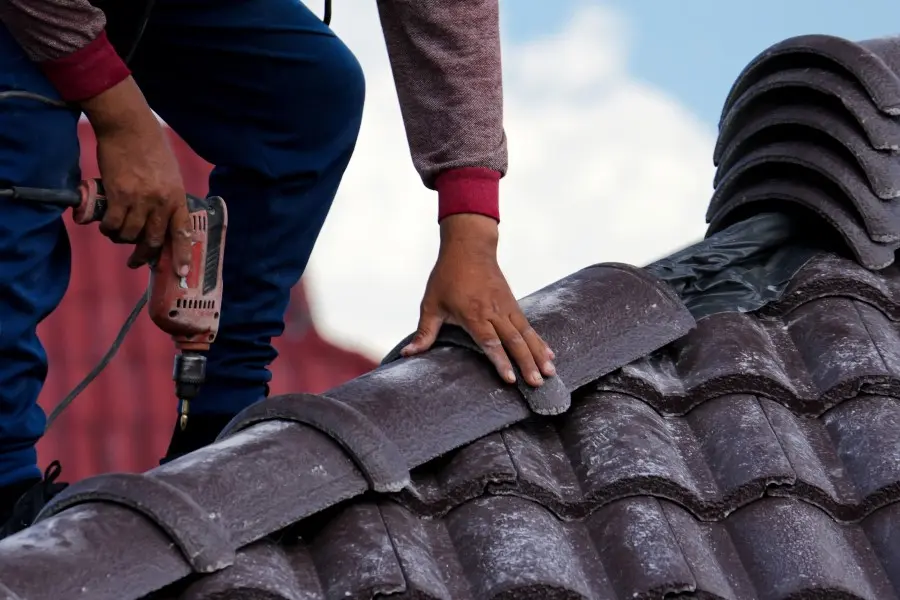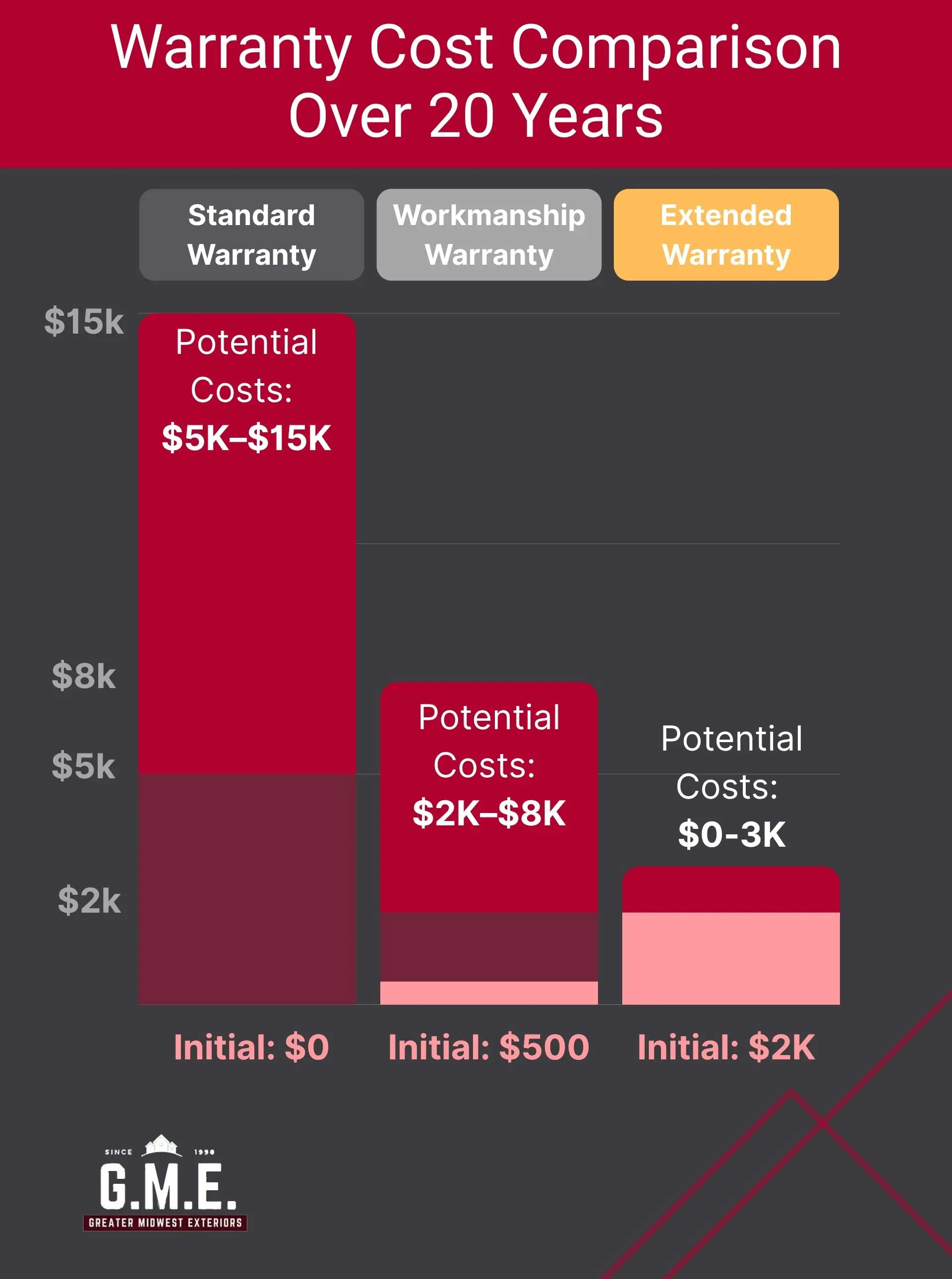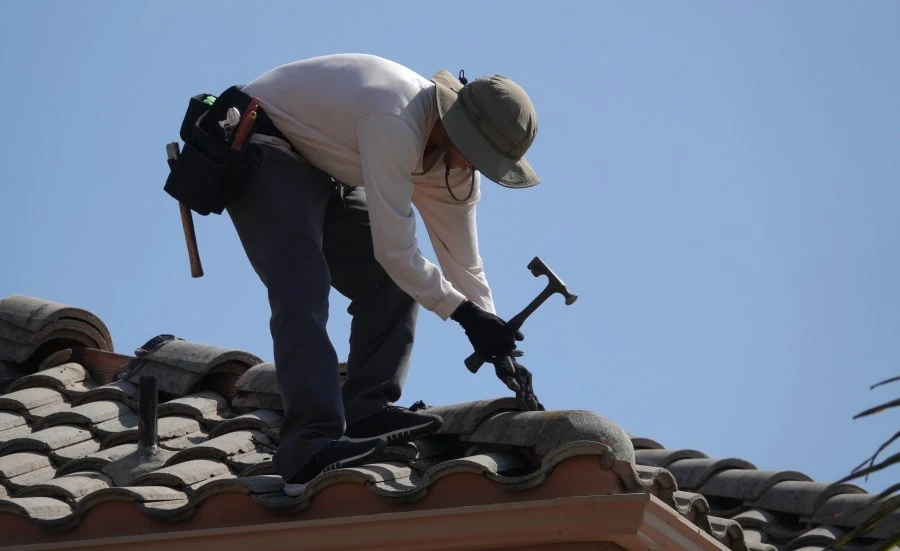Your roof protects everything you value, so protecting your roof investment is a wise decision. A comprehensive warranty acts as your safety net when materials fail or installation problems surface years after your roofing contractors complete the job. Despite this, most homeowners sign contracts without fully grasping what their warranty covers, what voids it, or how different types work together. Greater Midwest Exteriors is here to help you understand warranties and how beneficial they are.
The Three Main Types of Roofing Warranties
Understanding warranty categories helps you identify gaps in coverage before problems arise. Each type protects different aspects of your roofing system, and knowing their distinctions prevents costly surprises.
Standard Manufacturer's Material Warranty
Manufacturing defects account for less than 5 percent of all roofing failures, yet material warranties remain your first line of defense. These come directly from shingle manufacturers like GAF, Owens Corning, or CertainTeed.
What's covered:
- Premature granule loss on shingles
- Manufacturing flaws are causing material failure
- Defective underlayment or ice barriers
- Material breakdown under normal weather
What's not covered:
- Installation errors or poor workmanship
- Weather damage exceeding tested limits
- Problems from inadequate ventilation
- Normal aging and wear
Most manufacturers offer “limited lifetime” coverage, which specifically means coverage for as long as the original purchaser owns the home.
Contractor Workmanship Warranty
Since improper installation is the leading cause of roofing issues, workmanship warranties are often more valuable than material coverage.
Coverage includes:
- Improper fastener placement
- Inadequate sealing and waterproofing
- Incorrect flashing installation
- Poor ventilation setup
- Related interior damage from installation errors
Quality contractors offer 2-25 years coverage, with established companies often extending to lifetime protection. This variation reflects the contractor's confidence and business stability.
Extended Manufacturer System Warranty
These are premium warranties that bridge the gap between material and workmanship coverage. They require certified contractors and complete roofing systems.

Key advantages:
- Single-source accountability for all claims
- Non-prorated coverage for 25-50 years
- Combined material and workmanship protection
- Coverage for tear-off and disposal costs
- Elimination of finger-pointing between parties
The trade-off is that the higher upfront costs and strict requirements mean only using manufacturer-approved products throughout the system.
What Roofing Warranties Actually Cover vs. Common Exclusions
When homeowners read the fine print of their roofing warranty, they’re often surprised to find significant coverage gaps. Standard inclusions typically encompass manufacturing defects in shingles, defective accessory products, premature material failure under normal conditions, and workmanship errors when covered by contractor warranties.
Common exclusions across most warranties include:
- Hurricanes, tornadoes, earthquakes, floods
- Impact damage from falling trees or wind-blown debris
- Problems caused by foot traffic or equipment installation
- Ice dam formation and related water damage
- Alterations made without the manufacturer's approval
- Issues stemming from poor attic ventilation
- Damage from algae, moss, or mold growth
- Normal wear and color fading over time
The distinction between covered failures and exclusions often determines whether repairs cost nothing or thousands. For example, if shingles blow off during a windstorm, coverage depends on wind speed ratings and proper installation. Most warranties cover winds up to 60-70 mph for standard shingles, while high-wind warranties may protect against 110-130 mph winds when properly installed.
Factors That Can Void Your Roofing Warranty
Even comprehensive warranties become worthless when voided through specific actions or negligence. The better you understand these triggers, the easier it is to maintain your coverage throughout the warranty period.
Installation and Modification Issues
Using non-certified contractors tops the warranty violation list. Manufacturers require certified installers for extended warranties, and mixing products from different manufacturers (like GAF shingles with Owens Corning underlayment) often voids all coverage immediately.
Post-installation modifications create similar problems. For example, adding solar panels, satellite dishes, or skylights without following the manufacturer's guidelines typically voids affected areas. Always get written approval before any roof modifications.

Maintenance and Ventilation Requirements
Did you know that poor attic ventilation causes more warranty denials than any other issue? Manufacturers typically require 1 square foot of ventilation per 150-300 square feet of attic space. Without proper airflow, heat buildup accelerates deterioration, creating conditions manufacturers won't cover.
Required maintenance includes:
- Annual professional inspections
- Prompt minor repairs
- Regular gutter cleaning
- Debris removal from roof surfaces
- Maintaining proper attic ventilation
Document all maintenance thoroughly, as you'll need these records if filing a claim. Missing required maintenance or failing to document it gives manufacturers easy grounds for denial.
Which Warranty Actually Protects Your Investment?

The warranty you choose depends on several factors, including budget, expected home ownership duration, local weather conditions, and risk tolerance. Consider these scenarios:
- For budget-conscious homeowners: Standard manufacturer warranties with reputable contractor workmanship coverage provide adequate protection for most situations. Focus on contractors offering at least 10-year workmanship warranties backed by proven business stability.
- For long-term homeowners: Extended system warranties justify higher costs through comprehensive coverage and simplified claims. The single-source accountability eliminates finger-pointing between manufacturers and contractors.
- For severe weather areas: Look for enhanced wind coverage and impact-resistant shingle warranties. Some manufacturers offer specific hurricane or hail warranties for qualifying installations in high-risk zones.
- For home sellers: Transferable warranties add value during sales. Most manufacturer warranties transfer once for a small fee, while contractor warranties vary. To avoid coverage gaps, be sure to document transfer procedures.
Prorated vs. Non-Prorated Coverage: What You Need to Know
Most homeowners discover too late that their "50-year warranty" won't cover a full replacement after year 10. Here's what actually happens to your coverage:
- The reality: After the non-prorated period ends (typically 10-15 years), you pay an increasing percentage plus ALL labor costs. A "lifetime" warranty might cover just 20% of materials by year 40, leaving you with 80% of the bill.
- Smart move: Premium warranties with 25-50 year non-prorated periods cost more upfront, but save thousands when you actually need coverage.
The Impact of Material Choice on Warranty Terms
Different roofing materials come with varying warranty structures that reflect their expected lifespans and durability:
- 3-tab asphalt shingles: Basic warranties spanning 20-25 years with limited wind coverage and shorter non-prorated periods. These economical options offer adequate protection for budget-conscious homeowners.
- Architectural shingles: Enhanced warranties covering 30-50 years with improved wind resistance ratings and longer non-prorated periods. Premium lines may include algae resistance and enhanced impact ratings.
- Metal roofing: Warranties typically cover 30-50 years for paint finish and weathertightness. Some manufacturers offer separate warranties for substrate, paint, and weather resistance.
- Slate and tile: Natural materials often carry limited warranties, since the products themselves last 75-150 years. Warranties primarily cover manufacturing defects instead of longevity.
- Synthetic materials: Composite and rubber roofing warranties span 30-50 years, often including enhanced impact resistance and weathering protection.
The material you choose directly impacts available warranty options and long-term protection value. When you’re evaluating the total investment value, consider both material and warranty costs.
Red Flags When Evaluating Warranty Offers
There are warranty red flags that we encourage you to recognize to stay protected from inadequate coverage or fraudulent promises. Watch for these warning signs:

- Suspicious contractor warranties: Lifetime warranties from new companies lacking established history, verbal warranty promises without written documentation, warranties contingent on annual paid inspections, and coverage requiring the same contractor for all future work.
- Questionable terms: Excessive exclusions eliminating most common issues, unrealistic maintenance requirements difficult to meet, non-transferable warranties limiting home value, and vague language avoiding specific coverage details.
- High-pressure tactics: Contractors demanding immediate decisions for "special warranty deals," claims of exclusive warranty access that others can't provide, and refusal to provide warranty documentation before signing.
Any legitimate warranty will come with clear, written terms from established companies with proven track records. Take the time to verify contractor licensing, insurance, and manufacturer certifications before you accept warranty promises.
Warranty Transfers When Selling Your Home
Transferable warranties can increase your home's sale price and reduce market time. Most manufacturer warranties allow one transfer for $50-200, maintaining coverage for new owners. For example, GAF allows for a one-time transfer of its warranty, provided specific conditions are met.
Transfer requirements:
- Notify the manufacturer within 30-60 days of sale
- Complete official transfer forms
- Pay the transfer fee at closing
- Provide the new owner's contact information
Contractor workmanship warranties vary widely; some transfer automatically, others become void. Before you list your property, verify transfer terms. Include warranty documentation in the sale paperwork and complete transfers at closing to protect both parties.


.svg)






